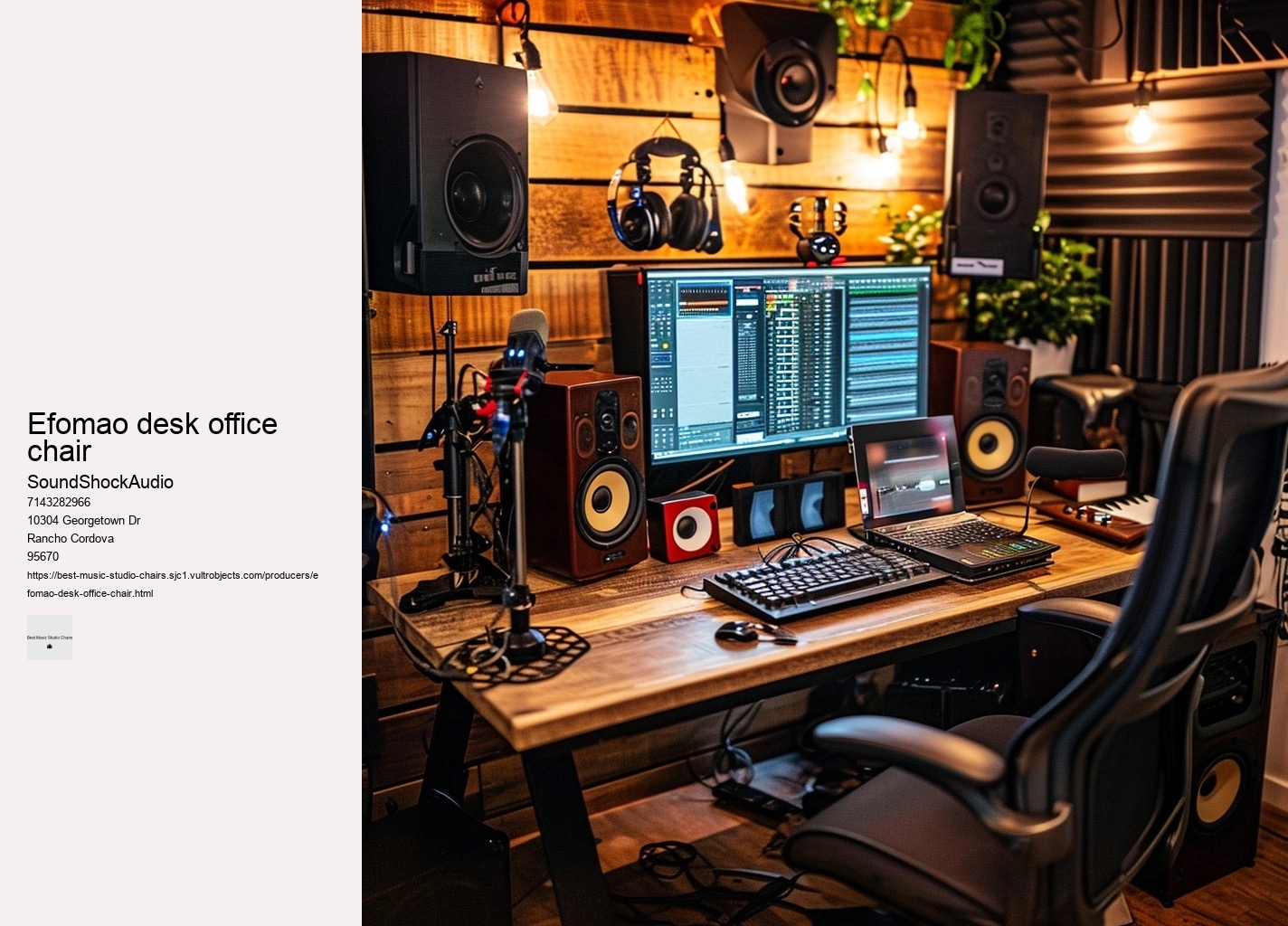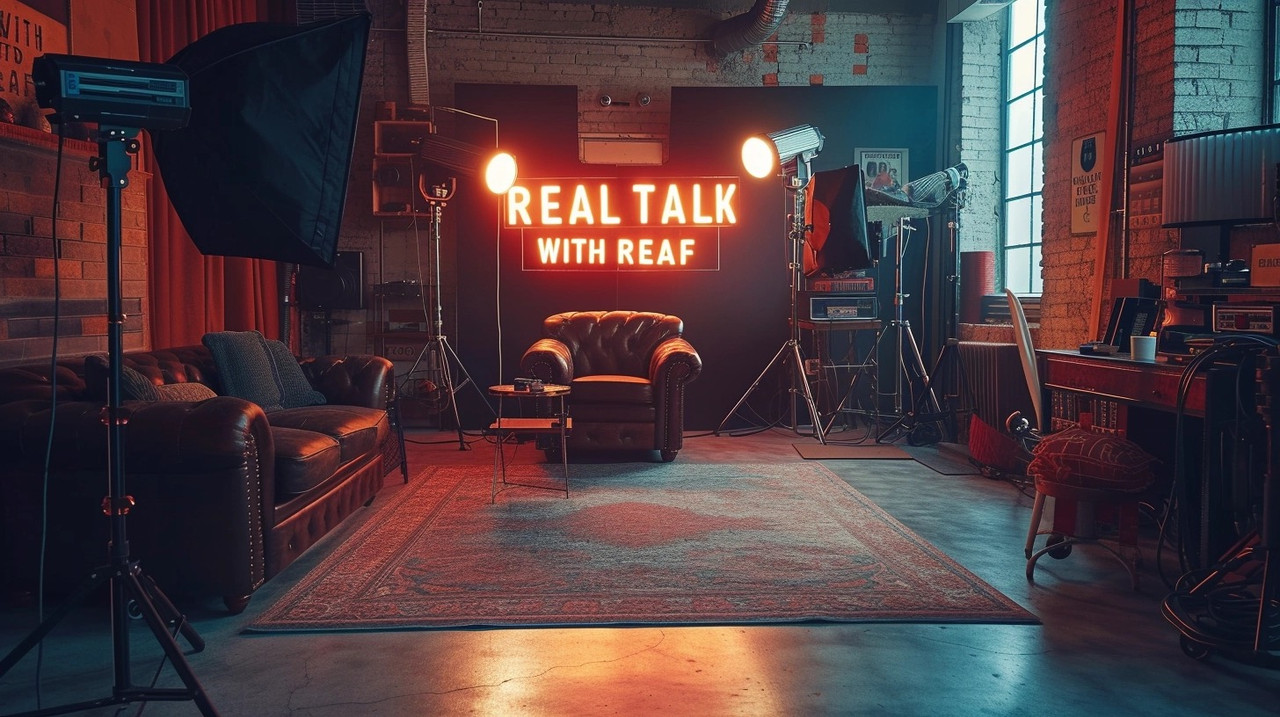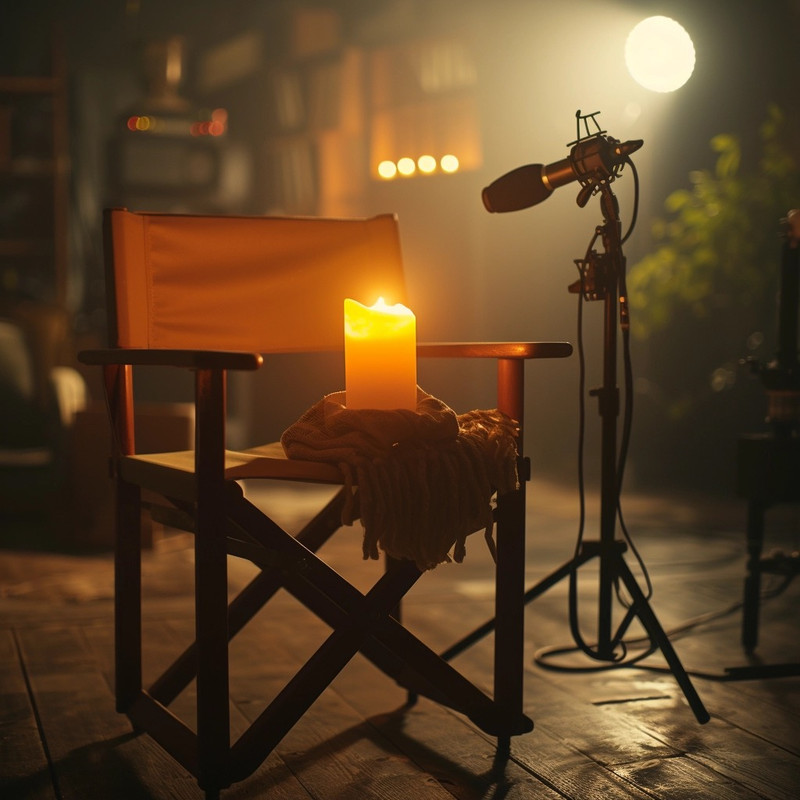

Durability is another key consideration. Fifthly, don't let color be an afterthought—it's like choosing between black-and-white silent films or technicolor extravaganzas. Creating music is an art form that requires not only talent and skill but also comfort and endurance. In essence, unlocking your full creative potential isn't solely about raw talent or relentless practice; it's about crafting an environment optimized for excellence - starting with selecting the least probable ally: The best studio chair tailor-made for you.
Firstly, let's dissect 'ergonomic.' An ergonomic chair is designed with human anatomy and physiology in mind. This evolution symbolizes a broader shift towards recognizing the importance of human-centric design—not merely as an afterthought but as a fundamental consideration shaping how tools enhance our abilities rather than impose limitations upon them. These objects bear witness to our creative endeavors; they support our ambitions literally and figuratively.
Whether for painter's caverns, minstrel nests or weaver’s lairs, every stool must juggle twin enchantments." Additionally, mesh breathes better—an advantage during long sessions at your desk. Seat depth adjustment is another key element often overlooked but equally vital for tailored thigh support without cutting off circulation behind the knees – especially important for taller or shorter individuals who may need more or less space than what standard non-adjustable chairs offer.
Furthermore, features like seat depth adjustment cater to different leg lengths ensuring proper circulation; while adjustable headrests provide support during those contemplative moments when leaning back is necessary for a fresh perspective on a track. Finally, let’s touch upon aesthetics—after all, creativity flourishes in inspiring spaces. Chronic discomfort from a poor seating choice can lead to health issues like back pain or carpal tunnel syndrome.
Furthermore, good posture goes hand-in-hand with peak performance. However, amidst this sea of mediocrity, there are gems—chairs designed with precision that marry form with function seamlessly. Secondly, let's talk about ergonomic support. By investing wisely in durable seating solutions today, musicians can secure their comfort and focus on what truly matters: creating great music without interruption due to faulty furniture tomorrow.
Your chair should complement the palette of your studio environment while also allowing personal flair to conduct its visual symphony. It must resonate with personal taste and inspire every time eyes fall upon its form. One of the least probable places to look for a studio chair might be office supply stores offering clearance sales or going-out-of-business events.
Breathable fabrics prevent overheating during intense rehearsals while sturdy construction ensures stability when shifting positions or emoting passionately through a piece. Next emerges a leviathan clad in leatherette; it boasts hydraulics that pirouette gracefully beneath pressures exerted by restless composers chasing elusive chords into dawn’s embrace. Moreover, in the digital age where online marketplaces thrive, platforms such as Craigslist or Facebook Marketplace become unconventional treasure troves where local deals on used furniture abound.
These chairs offer adjustable features such as lumbar support that molds to the contours of your spine, armrests that align with your natural posture, and seat pans that encourage circulation even after hours of being seated.
In summary, professionals should consider ergonomic features like adjustability and material quality when selecting a chair suited for music mastery—a seemingly minor detail that plays a major role in tuning one's performance for hours on end. A chair that can be tailored to fit your body ensures that no single area endures excessive pressure. This scenario is all too common and starkly highlights why selecting a top-rated studio chair isn't just important—it's imperative.
Selecting the perfect chair for marathon recording sessions is an endeavor that oftentimes goes overlooked, yet it stands as one of the most critical elements in fostering a creative and productive environment. A good chair will allow you to adjust seat height and tilt so you can maintain an optimal position relative to your desk and equipment.
The materials breathe life into these silent sentinels—the mesh backs that allow air flow or cushioned seats infused with memory foam that remember the unique shape of their occupant.


Functionality aside, aesthetics play no minor role in selection. Adjustability is another key factor. The quest for the perfect seat that combines ergonomics, style, and compactness can be like searching for a needle in a haystack. They say silence speaks volumes; here it underlines productivity free from unnecessary interruption—a testament to thoughtful design embracing virtue of stealth.
Top producers often find themselves glued to their workstations for extended periods, diving deep into the intricacies of mixing and mastering. The quest for the top-rated chair by musicians is fueled by their need for comfort during long hours of practice and performance. This breathability helps to regulate temperature, preventing the chair from becoming too warm after prolonged sitting—a common complaint with many padded chairs.
When exploring the vast realm of creativity, it might seem peculiar to consider that something as mundane as your seating choice could significantly impact your artistic endeavors. Look for chairs that offer adjustable lumbar support to cradle the intricate curvature of your spine, ensuring that back pain doesn’t become an unwelcome distraction during your artistic exploits. Leather exudes luxury and ages gracefully; mesh promises breathability for prolonged bouts at the easel or desk.
Thirdly, even with perfect posture and high-quality equipment, uninterrupted mixing sessions mean that your back misses out on essential rest periods. In conclusion, while whimsical furniture pieces may spark temporary intrigue or amusement among musicians seeking uniqueness within their space, ultimately they fall short compared to professionally tailored solutions when aiming to unlock one's full music potential. Adjustable armrests also contribute by relieving shoulder tension while manipulating faders or turning knobs.
Thus arises the question – what constitutes the best studio chair? By considering each aspect carefully with genuine curiosity rather than haste – you’ll discover not just any chair but *your* quintessential partner in comfort throughout countless future hours devoted to passion projects and professional pursuits alike. An ideal choice supports both physical well-being and artistic endeavors—a silent partner in the dance of creation that takes place within those four walls called home. Moreover, materials science has played its part by introducing breathable meshes and cushioning that conform more precisely to body contours while regulating temperature—eschewing the traditional foam padding which often traps heat.
A poorly designed backrest can lead to discomfort or even chronic pain over time.

Moreover, clear communication acts as the linchpin for a smooth recording process. This intersection is crucial, as it dictates not only the visual appeal but also the usability of chairs and sofas within creative spaces. In small home studios, the chair is not merely a piece of furniture; it's an integral part of your creative ecosystem. Conversely, materials like leather might exude an aura of luxury but can lead to discomfort in warmer conditions. Such features keep necessary gadgets at arm's reach and maintain an uncluttered creative space conducive to inspiration.
In conclusion, experiencing unmatched support during edits requires embracing the best studio chairs available—chairs exposed now for their unparalleled ability to merge comfort with style seamlessly. Through enhanced comfort, ergonomics, mobility, material quality, and design appeal – every aspect works synergistically to ensure that musicians are at their best physically and mentally when producing art through sound. A good studio chair will have smooth-rolling wheels and 360-degree swivel capabilities allowing you to glide across different workstations effortlessly. Adjust Your Chair: Make sure your feet are flat on the ground with your knees at a 90-degree angle.
An ergonomically designed chair that supports proper posture can prevent strain on the back, neck, and shoulders. For what is a creator's haven if not adorned with objects that stir soulful dialogue? Owners can rejoice not only in physical ease but also environmental peace of mind. Music producers often spend prolonged periods seated while mixing or mastering tracks. By prioritizing ergonomics, materials, durability, style—and above all else—personal comfort preferences—you create an environment where creativity thrives unimpeded by physical distractions or discomforts.
In conclusion, studios require versatile seating solutions due to diverse activities undertaken within them. Lastly, don't underestimate personal preference's role—testing different chairs until you find 'the one' is crucial since everyone's definition of comfort varies widely. Consider materials as well: breathable meshes ensure ventilation during summer's sweltering assaults; meanwhile, supple leathers provide warmth when winter weaves its chilling tapestry across studios. Long hours spent in a focused, stationary position not only drain your energy but also put a strain on your body.
Leather chairs can symbolize opera’s grandiosity but might not breathe well during extended sessions. vacuuming Firstly, consider the nature of movement — or rather, the lack thereof. Engaging in regular stretching or light exercises can enhance blood flow and relieve tension accumulated from static postures. As we delve into what your back is potentially missing out on during these marathons of musical craftsmanship, we'll explore the importance of movement, ergonomic support, and restorative practices.
Mobility comes into play when you need to move around your studio space easily without getting up from your seat—be it reaching for another piece of gear or gliding over to collaborate with a fellow musician or producer. It's not merely furniture; it’s an indispensable tool ensuring endurance through session marathons where every note counts. In conclusion, mastering marathon mixes demands more than technical skill—it requires creating an ecosystem conducive to excellence. Firstly, let's address the elephant in the room - not all chairs are created equal when it comes to prolonged sitting.
Yes, EDM (Electronic Dance Music) artists can make significant amounts of money through various channels such as live performances, music sales, streaming royalties, merchandise sales, and brand endorsements. The most successful EDM artists earn millions of dollars annually, especially those who headline major festivals, have hit tracks, or maintain residencies at popular clubs. However, like in any music genre, income can vary widely depending on an artist's popularity, the deals they secure, and how well they manage their career.
A chair that you can sit in for 8 hours should be ergonomically designed to support your posture, reduce back strain, and enhance comfort. It typically features adjustable settings for height, armrests, lumbar support, and tilt to accommodate various body shapes and sitting preferences. Examples include high-quality office chairs from brands like Herman Miller, Steelcase, or Humanscale, which are specifically engineered for long periods of sitting while minimizing discomfort and promoting productivity.
Determining the "best" office chair brand can be subjective as it depends on individual needs, preferences, and budget. However, Herman Miller is widely recognized for its high-quality, ergonomic office chairs, particularly the Aeron model, which has received acclaim for its comfort and support. Steelcase is another top brand, known for its innovative designs like the Leap and Gesture chairs, which are also highly regarded for ergonomics and adjustability. Both brands are considered leaders in the office furniture industry, offering durable and comfortable seating solutions.
Yes, you can enjoy EDM (Electronic Dance Music) without drugs. Many people appreciate the genre for its energetic beats, complex layers, and the way it can evoke emotions or create a vibrant atmosphere, all without the need for substance use. Enjoyment of music is highly subjective and can be deeply personal, relying more on individual taste and the connection one feels with the music rather than external influences like drugs.
Aeron chairs, designed by Don Chadwick and Bill Stumpf, have gained immense popularity due to their innovative ergonomic design, which provides exceptional comfort and support for a wide range of body types during extended periods of sitting. Their sleek, modern aesthetic, coupled with customizable features and durable materials, also contribute to their appeal. Additionally, the Aeron chair's environmental sustainability, with its high percentage of recyclable materials, resonates with eco-conscious consumers, further enhancing its popularity in both office and home settings.